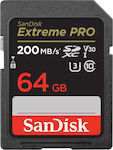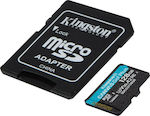After two weeks with the new SONY A7iv, I am sharing my first impressions...
I would like to clarify that I was one of the first to acquire the Sony A7iv from a well-known Greek store and an official Sony partner. Therefore, I am sharing my first impressions, the advantages and disadvantages as an average user of the camera. I have not fully explored the camera, nor am I an expert in conducting specialized photographic tests (nor did I have the time). Moreover, there are dozens of videos available on the internet for this purpose. I also won't delve into specific technical characteristics, video encoding, etc., as these are already well-known and easily found online. Lastly, I want to mention that I was a former user of the very popular Sony A7iii, so any comparisons will inevitably be made only with the A7iii.
Firstly, I would like to mention that the camera was carefully packaged in a box made entirely of recyclable materials. It included the usual accessories such as the power adapter with the power cable (with an American plug), a USB Type-C cable, a rechargeable battery, a shoulder strap, the body cap, and a quick start guide. It does not include a detailed user manual, neither in Greek nor in any other language, as it is now available electronically online in Greek on Sony's website since December. Of course, there is no battery charger included, so the battery is charged within the camera. Additionally, the packaging contained a coupon for online activation, which, upon product registration, provides an additional year of warranty, bringing Sony's total warranty period to 3 years (2+1). Finally, it also included a second coupon for online activation by Sony, offering three €100 discount codes for the purchase of Sony lenses, valid until the summer of 2022.
Advantages:
1) Ergonomics: It is slightly less compact - fortunately or unfortunately for some - than the A7iii, but it has a similar weight and a comfortable grip. It provides better grip with the palm when holding the camera from the profile and its handle.
2) Image Quality: The new 33MP sensor and faster Exmor R, BSI-CMOS processor try to strike a balance between the highly video-oriented A7Siii and the highly photographic A7riii/A7riv, resulting in a significantly improved output. The Sony A1 operates in a different league and category, so there is no reason for comparison. Although I haven't taken many photos in various conditions, its overall performance as a hybrid camera seems promising. From the first photos I took, it appears to have more vibrant colors, better sharpness, and detail (using a Samyang 24mm f1.8 lens).
3) Video: It excels in the ability to shoot videos in 4:2:2 10-bit/4K 60p resolution (Long GOP or All-Intra) with the help of the new Bionz XR processor borrowed from Sony's flagship models. I am not an expert in video and have not extensively explored this aspect yet. However, the camera is packed with a wide variety of high-end advanced video recording functions, including normal and fast/slow recording (Slow&Quick). I was impressed by the new customization options it offers, such as Shutter: A pleasant feature is the shutter with the protective "curtain" when changing lenses, so no more worries about dust and debris. However, I did notice a slight delay when activating/deactivating the camera when this new feature is selected from the menu. Connectivity: Seamless connection between the camera and smartphone via Bluetooth 4.1 and WiFi on both 2.4GHz and 5GHz networks with my router. The connection with Mac is also flawless, including bidirectional connectivity. Additionally, through the new (fully) HDMI port, I connected the A7iv to an OLED LG screen. The television recognized it immediately, and I was able to navigate through the camera's menu (a happy accident) using the smart remote control of the TV!
Disadvantages:
1) The well-known 1.5x crop in 4K 60p video mainly disappoints videographers.
2) The LCD screen is inferior to competitors.
3) RAW file processing is still not available in many editing programs (not Sony's fault).
4) Reduced buffer in raw, unprocessed file shooting.
5) To fully utilize the video's capabilities, you need Sony's fast cards - CFexpress Type-A (expensive).
6) I assume that due to improved power-consuming features on the screens and the faster processor, the battery life is slightly shorter in some instances compared to the A7iii (they have the same type of battery).
Conclusion: The Sony A7iv is a fully upgraded hybrid camera in all aspects compared to the A7iii. Of course, the A7iii remains an excellent camera despite its technological age of 3-4 years. It is well-known that when the A7iii was released in 2018, it caused a "quake" in the camera market. The A7iv's similar journey in an already saturated and competitive photography market will soon become apparent. Now, whether it's worth the additional 1000 euros to upgrade from the A7iii to the A7iv is a personal answer that you will give to yourself.
I may come back with an update review in the future.
PLUS + update review 29/10/2022
After approximately 10 months of use, I am revisiting the A7IV in comparison to my previous camera, the Sony A7III.
To summarize, the Sony A7IV has:
Advantages:
- Upgraded image quality with warmer colors
- Better low-light shooting capabilities
- Improved video with multiple options
- Better JPG and RAW files for post-processing
- Ergonomic, lightweight, and more compact
- Better wired connectivity
- Exceptional and advanced autofocus
- Rotating screen
- Improved menu (requires learning)
Disadvantages:
- Disappointed with the low resolution of the LCD screen
- Crop in 4K 60p video
- Relative overheating during long video shoots
- Expensive memory cards required to fully utilize the camera's capabilities
- Image and video stabilization not on par with the price
- Battery life is relatively reduced but much better than other brands
- Imaging Edge mobile/Desktop application is unstable and needs improvement
Conclusion: A very nice camera with advanced features, worth upgrading to or choosing if you are a demanding amateur photographer or even a professional, without extremely high demands. Professional photographers may prefer the 7R series for photography and the 7S series for video. A slightly lower rating would be mainly for the low-resolution screen and less for the crop in 4K 60p video, personally, since I don't frequently shoot videos. It goes without saying that I do not regret purchasing it.





















































